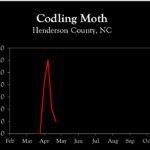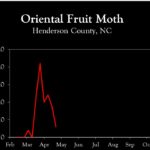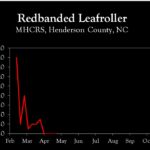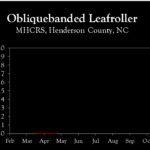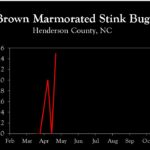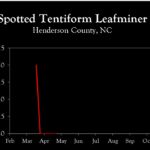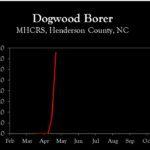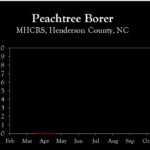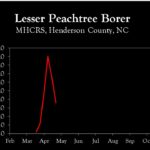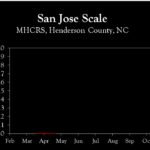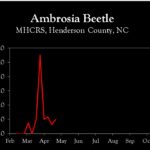WNC Orchard Insect Pest Populations – May 17, 2022
go.ncsu.edu/readext?865448
en Español / em Português
El inglés es el idioma de control de esta página. En la medida en que haya algún conflicto entre la traducción al inglés y la traducción, el inglés prevalece.
Al hacer clic en el enlace de traducción se activa un servicio de traducción gratuito para convertir la página al español. Al igual que con cualquier traducción por Internet, la conversión no es sensible al contexto y puede que no traduzca el texto en su significado original. NC State Extension no garantiza la exactitud del texto traducido. Por favor, tenga en cuenta que algunas aplicaciones y/o servicios pueden no funcionar como se espera cuando se traducen.
Português
Inglês é o idioma de controle desta página. Na medida que haja algum conflito entre o texto original em Inglês e a tradução, o Inglês prevalece.
Ao clicar no link de tradução, um serviço gratuito de tradução será ativado para converter a página para o Português. Como em qualquer tradução pela internet, a conversão não é sensivel ao contexto e pode não ocorrer a tradução para o significado orginal. O serviço de Extensão da Carolina do Norte (NC State Extension) não garante a exatidão do texto traduzido. Por favor, observe que algumas funções ou serviços podem não funcionar como esperado após a tradução.
English
English is the controlling language of this page. To the extent there is any conflict between the English text and the translation, English controls.
Clicking on the translation link activates a free translation service to convert the page to Spanish. As with any Internet translation, the conversion is not context-sensitive and may not translate the text to its original meaning. NC State Extension does not guarantee the accuracy of the translated text. Please note that some applications and/or services may not function as expected when translated.
Collapse ▲Codling Moth, European Red Mite
Codling moth remains the key pest that poses a threat to apples. This is also a time to consider a preventive miticide application for those using this approach in specific orchards or cultivars.
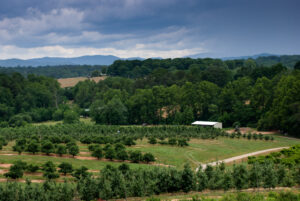 Codling Moth
Codling Moth
Egg hatch degree-day models range from about 300 DD in Henderson County to about 440 DD in lower-elevation Cleveland County. In Henderson County, this week is optimum timing for an initial insecticide in orchards with historically low population densities. In orchards with moderate to high populations of codling moth, last week was optimum timing for the first insecticide application. In orchards using mating disruption, it is doubtful that an insecticide is necessary unless pheromone traps are consistently capturing moths.
In orchards at lower elevations where DD accumulations are greater than 400, applications at this time should be based on intensity of moth captures in pheromone traps. If there is no trapping being conducted, it would be wise to assume populations are high and to make a total of 3 applications at 2-week intervals during the first generation. In lower-elevation orchards using mating disruption for codling moth, it is recommended that a single insecticide be applied against the first generation codling moth. This application should coincide with tufted apple bud moth DD accumulations reaching about 800, which is expected to occur next early next week.
Preventive Control of European Red Mite
In orchards with a history or European red mite problems, several options are available for preventive control that usually provides season-long suppression. These include Apollo, Savey, Zeal, Envidor and Agri-Mek. For resistance management purposes, rotate products with different modes of action annually. Apollo and Savey are the same mode of action (MOA group 10A), so do not use either of these in successive years. Agri-Mek should be applied at petal fall to first cover, and either a horticultural oil or penetrating adjuvant should be used to maximize uptake by leaves – if using oil do not use within 14 days of using Captan.
Learn more about southeastern apple insect pests at the Apple Insect Management page.
2022 Average Weekly Trap Captures
| HENDERSON COUNTY | |||
| Insects per trap | |||
| May 2 | May 9 | May 16 | |
| Codling moth | 12.0 | 4.0 | 2.0 |
| Oriental fruit moth | 12.0 | 9.0 | 3.0 |
| Tufted apple bud moth | 7.0 | 16.0 | 18.0 |
| Redbanded leafroller | 0.0 | 0.0 | 0.0 |
| Obliquebanded leafroller | 0.0 | 0.0 | 0.0 |
| Lesser appleworm | – | – | 0.0 |
| Apple maggot (abandoned and research orchards) | – | – | – |
| Brown marmorated stink bug (commercial) | – | – | – |
| Brown marmorated stink bug (unsprayed) | 1.0 | 0.0 | 0.0 |
| Spotted tentiform leafminer | 0.0 | 0.0 | 0.0 |
| Dogwood borer | 0.0 | 7.0 | 38.0 |
| Peachtree borer | 0.0 | 0.0 | 0.0 |
| Lesser peachtree borer | 45.0 | 33.0 | 18.0 |
| San Jose scale | 0.0 | 0.0 | 0.0 |
| Ambrosia beetle (all species) | 2.3 | 1.3 | 2.0 |
*Note that these averages illustrate only the timing of insect emergence and fluctuations in populations, and are not representative of population levels in any given orchard. The only way to have an accurate assessment of an individual orchard’s populations is to set up traps in that orchard.
2022 Accumulated Degree Days
| HENDERSON COUNTY | ||||
| May 2 | May 9 | May 16 | ||
| Codling moth (Biofix: April 22) | 104 | 200 | 296 | |
| Oriental fruit moth (Biofix: April 12) | 260 | 390 | 519 | |
| Tufted apple bud moth (Biofix: April 27) | 62 | 193 | 321 | |



